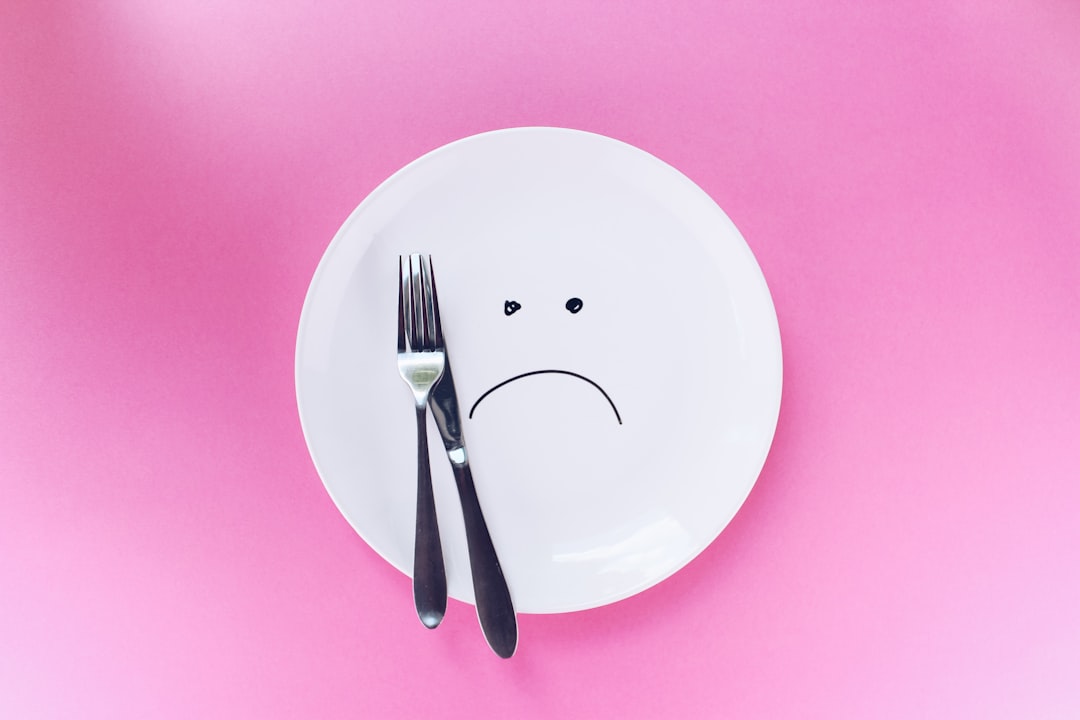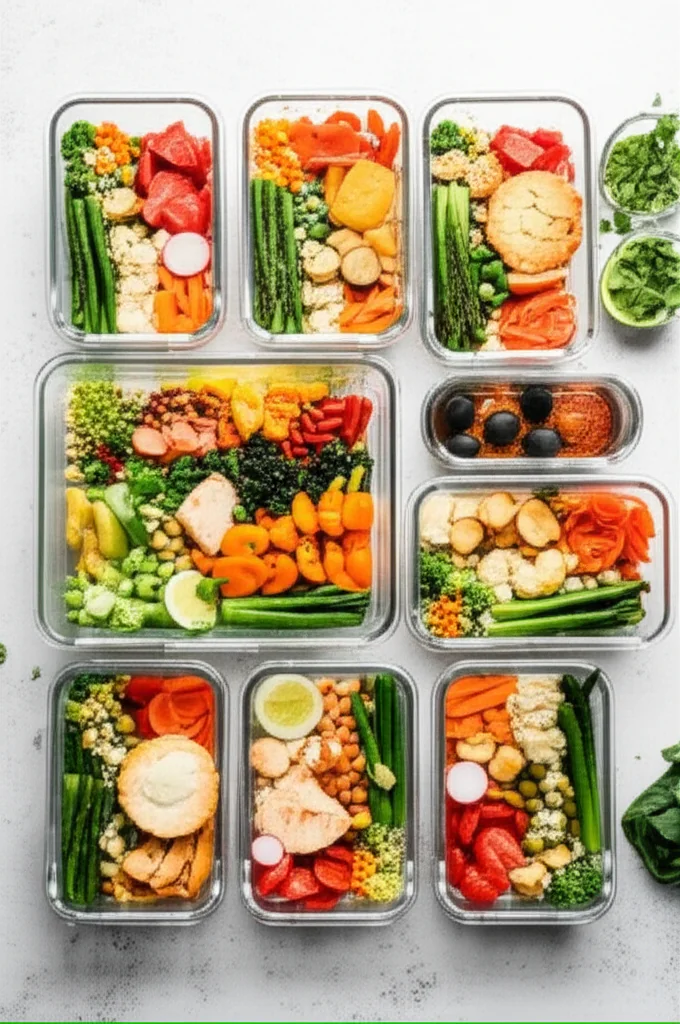Support our educational content for free when you buy through links on our site. Learn more
What are the Disadvantages of Flexitarian Diet? [2024] 🌱
Are you considering adopting a flexitarian diet but want to know the potential downsides? We’ve got you covered! In this article, we’ll dive deep into the disadvantages of the flexitarian diet, providing you with a comprehensive understanding of the challenges you may face. But don’t worry, we’ll also offer tips and solutions to help you overcome these obstacles and make the most of your flexitarian journey. So, let’s get started!
Table of Contents
- Quick Answer
- Quick Tips and Facts
- Background: What is the Flexitarian Diet?
- Cons of the Flexitarian Diet
- Will You Lose Weight on the Flexitarian Diet?
- FAQ
- Conclusion
- Recommended Links
- Reference Links
Quick Answer
The flexitarian diet offers numerous benefits, but it’s important to be aware of the potential disadvantages as well. Here are the key drawbacks of the flexitarian diet:
✅ Potential feelings of deprivation
✅ Risk of unhealthy food choices
✅ Prone to B12 and iron deficiency
While these challenges may seem daunting, with the right strategies and knowledge, you can overcome them and thrive on a flexitarian diet!
👉 CHECK PRICE on: Flexitarian Diet Cookbook | Flexitarian Meal Planner | Flexitarian Starter Kit
Quick Tips and Facts
Before we delve into the disadvantages of the flexitarian diet, here are some quick tips and facts to keep in mind:
💡 The flexitarian diet is a flexible approach to eating that focuses on mostly plant-based foods while allowing for occasional meat consumption.
💡 Flexitarians enjoy the health benefits of a plant-based diet while still having the flexibility to include animal products if desired.
💡 The flexitarian diet is not about strict rules or restrictions but rather about making conscious choices that align with your health and values.
Now that we have a basic understanding of the flexitarian diet, let’s explore the potential disadvantages in more detail.
Background: What is the Flexitarian Diet?

Before we dive into the disadvantages, let’s briefly recap what the flexitarian diet is all about. The flexitarian diet, coined by registered dietitian Dawn Jackson Blatner, is a flexible approach to eating that combines the best of both worlds: the health benefits of a plant-based diet and the flexibility to include meat and other animal products in moderation.
Flexitarians primarily focus on consuming plant-based foods such as fruits, vegetables, whole grains, legumes, and nuts. These foods form the foundation of their diet, providing essential nutrients, fiber, and antioxidants. Flexitarians also incorporate animal products like meat, poultry, fish, eggs, and dairy, but in smaller quantities and less frequently than traditional omnivores.
The flexitarian diet is not about strict rules or eliminating entire food groups. Instead, it encourages making conscious choices that prioritize plant-based foods while still allowing for occasional indulgences. This flexible approach makes it easier for individuals to adopt and sustain a healthier eating pattern without feeling deprived or restricted.
Now that we have a better understanding of the flexitarian diet, let’s explore the potential disadvantages you may encounter on your flexitarian journey.
Cons of the Flexitarian Diet
While the flexitarian diet offers numerous benefits, it’s essential to be aware of the potential downsides. Let’s take a closer look at the disadvantages and explore strategies to overcome them.
1. Potential Feelings of Deprivation
One of the challenges you may face when adopting a flexitarian diet is the potential for feelings of deprivation. As you reduce your meat consumption and prioritize plant-based foods, you may miss the taste and texture of certain animal products. This can be especially true if you’ve been accustomed to a diet rich in meat and other animal-based foods.
To overcome this challenge, it’s important to focus on the abundance of delicious plant-based options available to you. Experiment with new recipes, flavors, and cooking techniques to discover exciting plant-based meals that satisfy your taste buds. Incorporate a variety of fruits, vegetables, whole grains, legumes, and nuts into your diet to ensure you’re getting a wide range of nutrients and flavors.
Additionally, keep in mind that the flexitarian diet allows for occasional meat consumption. You can still enjoy your favorite meat-based dishes on special occasions or when dining out. By adopting a flexible mindset and finding a balance that works for you, you can overcome feelings of deprivation and fully embrace the benefits of the flexitarian lifestyle.
2. Risk of Unhealthy Food Choices
Another potential disadvantage of the flexitarian diet is the risk of making unhealthy food choices. While the diet encourages the consumption of plant-based foods, it doesn’t guarantee that all your choices will be nutritious. It’s still possible to fill up on processed foods, sugary snacks, and unhealthy vegetarian options.
To mitigate this risk, it’s important to prioritize whole, unprocessed foods in your diet. Choose nutrient-dense options such as fruits, vegetables, whole grains, legumes, and nuts. These foods provide essential vitamins, minerals, fiber, and antioxidants that support overall health and well-being.
When incorporating meat and other animal products into your diet, opt for lean sources and practice portion control. Choose high-quality, ethically sourced meats and seafood whenever possible. By focusing on whole, unprocessed foods and making conscious choices, you can ensure that your flexitarian diet is both nutritious and satisfying.
3. Prone to B12 and Iron Deficiency
One of the potential drawbacks of the flexitarian diet is the increased risk of B12 and iron deficiency. Vitamin B12 is primarily found in animal-based foods, and iron from plant-based sources may not be as readily absorbed by the body as iron from animal sources.
To address these concerns, it’s important to pay attention to your nutrient intake and consider supplementation if necessary. Include fortified foods such as plant-based milk, breakfast cereals, and nutritional yeast in your diet to ensure an adequate B12 intake. You may also consider taking a B12 supplement to meet your needs.
To enhance iron absorption from plant-based sources, pair iron-rich foods with vitamin C-rich foods. For example, combine spinach with citrus fruits or enjoy a lentil salad with a squeeze of lemon juice. Cooking foods in cast-iron cookware can also increase the iron content of your meals.
Regularly monitoring your nutrient levels through blood tests and consulting with a registered dietitian can help ensure you’re meeting your nutritional needs on a flexitarian diet.
Will You Lose Weight on the Flexitarian Diet?
Weight loss is a common goal for many individuals, and the flexitarian diet can be an effective tool for achieving and maintaining a healthy weight. By prioritizing plant-based foods and reducing meat consumption, you naturally consume fewer calories and less saturated fat.
However, it’s important to note that weight loss on the flexitarian diet is not guaranteed. It ultimately depends on your overall calorie intake, food choices, and portion sizes. To achieve weight loss on a flexitarian diet, it’s important to focus on portion control, mindful eating, and regular physical activity.
Incorporating more fruits, vegetables, whole grains, and legumes into your meals can help you feel fuller for longer while providing essential nutrients. Limiting processed foods, sugary snacks, and high-calorie beverages can also support weight loss efforts.
Remember, weight loss is a complex process influenced by various factors. It’s essential to adopt a holistic approach to your health and well-being, focusing on nourishing your body with nutrient-dense foods and engaging in regular physical activity.
FAQ

What are the negatives of the Flexitarian diet?
The flexitarian diet offers numerous benefits, but it’s important to be aware of the potential negatives as well. The main disadvantages of the flexitarian diet include potential feelings of deprivation, the risk of unhealthy food choices, and the increased likelihood of B12 and iron deficiency. However, with the right strategies and knowledge, these challenges can be overcome, allowing you to thrive on a flexitarian diet.
Read more about “What is the Healthiest Diet in the World? … 🌍”
How much weight can you lose on a flexitarian diet?
Weight loss on a flexitarian diet varies from person to person and depends on various factors such as overall calorie intake, food choices, and portion sizes. While the flexitarian diet can support weight loss due to its emphasis on plant-based foods and reduced meat consumption, individual results may vary. To achieve weight loss on a flexitarian diet, it’s important to focus on portion control, mindful eating, and regular physical activity.
Read more about “Who Created the Flexitarian Diet? … 🌱🥦”
How many times a week do flexitarians eat meat?
Flexitarians typically consume meat and other animal products in moderation, aiming for a flexible balance between plant-based foods and occasional meat consumption. The frequency of meat consumption can vary depending on individual preferences and health goals. Some flexitarians may choose to have meat once or twice a week, while others may opt for less frequent consumption. The key is to find a balance that works for you and aligns with your health and values.
Read more about “How many times a week do flexitarians eat meat?”
What are three disadvantages bad things about being a vegetarian?
While a vegetarian diet can offer numerous health benefits, there are a few potential disadvantages to consider:
-
Risk of nutrient deficiencies: Vegetarians may be at a higher risk of certain nutrient deficiencies, such as vitamin B12, iron, zinc, and omega-3 fatty acids. However, with proper planning and attention to nutrient intake, these deficiencies can be mitigated.
-
Social challenges: Being a vegetarian in a predominantly meat-eating society can present social challenges, such as limited options at social gatherings or restaurants. However, with increasing awareness and availability of vegetarian options, these challenges are becoming less prevalent.
-
Potential for unhealthy food choices: While a vegetarian diet can be healthy, it’s still possible to make unhealthy food choices. Consuming excessive amounts of processed foods, sugary snacks, and unhealthy vegetarian options can negatively impact health. It’s important to prioritize whole, unprocessed foods and make conscious choices to ensure a balanced and nutritious vegetarian diet.
Conclusion

The flexitarian diet offers a flexible and sustainable approach to eating that combines the health benefits of a plant-based diet with the occasional inclusion of meat and other animal products. While there are potential disadvantages to consider, such as feelings of deprivation, the risk of unhealthy food choices, and the increased likelihood of B12 and iron deficiency, these challenges can be overcome with the right strategies and knowledge.
By focusing on nutrient-dense plant-based foods, making conscious choices, and monitoring your nutrient intake, you can thrive on a flexitarian diet and enjoy the numerous health benefits it offers. Remember, the key is to find a balance that works for you and aligns with your health goals and values.
So, are you ready to embark on your flexitarian journey? Embrace the flexibility, explore new flavors, and enjoy the abundance of delicious plant-based options available to you. Your health and the planet will thank you!
Recommended Links
- Flexitarian Basics
- Flexitarian Lifestyle
- Flexitarian Nutrition Facts
- Benefits of Flexitarian Diet
- Myths and Facts about Flexitarian Diet
- What are the Risks of Flexitarian? 2024
👉 CHECK PRICE on: Flexitarian Diet Cookbook | Flexitarian Meal Planner | Flexitarian Starter Kit




